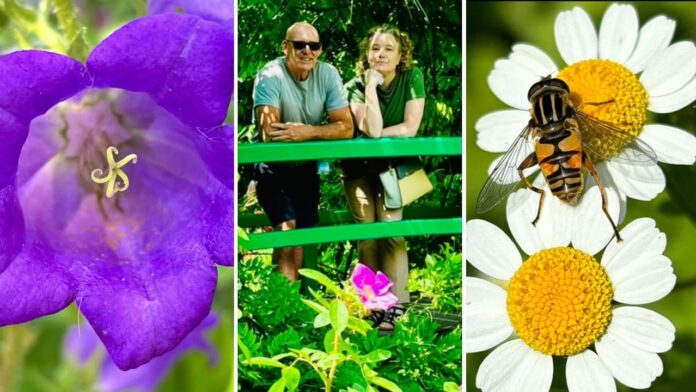Giverny, France – Claude Monet’s Gardens are both intimately familiar and overwhelming in their spectacle.
The French impressionist master lived in Giverny, France, for half his life, from 1883 to his death, at age 86, in 1926.
The gardens inspired Monet’s greatest and best-known paintings. They are a popular tourist attraction today, located near a tranquil bend of the Siene River. It’s an easy one-hour drive northwest of Paris. (See the video at the top of this article.)
THIS POPULAR FLOWER IS IN SENSATIONAL FORM IN NEW ENGLAND THIS SUMMER
Giverny is frequented by various tour groups from the city and is a common stop for Seine River cruise ships.
The spectacular gardens of Giverny proved a great source of inspiration for the artist. Monet’s arrival at Giverny coincided with a rise in his financial and artistic fortunes.
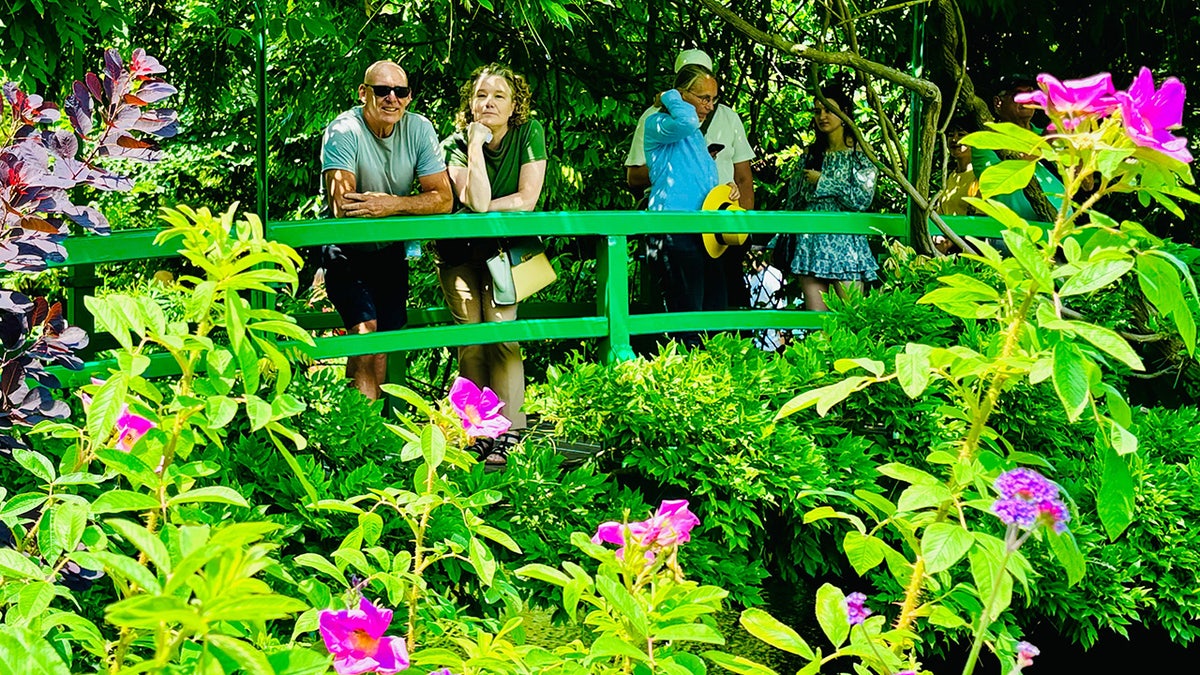
One of the famous bridges seen in Claude Monet’s paintings is a popular photo stop for visitors to his Gardens at Giverny today. (Kerry J. Byrne/Fox News Digital)
“Claude Monet’s gardens at Giverny are like his paintings — brightly colored patches that are messy but balanced,” reports RickSteves.com.
“Flowers were his brushstrokes, a bit untamed and slapdash, but part of a carefully composed design. Monet spent his last (and most creative) years cultivating his garden and his art at Giverny, the Camp David of Impressionism.”
SINGLE MOM TRAVELS TO 17 COUNTRIES WITH BABY DURING 3-YEAR- PAID MATERNITY LEAVE
The gardens wow visitors with splashes of color from April to October. The landscape is highlighted by the bridges and water lilies seen in hundreds of Monet’s paintings known throughout the world.
Here are some of the early summer flowery highlights of Monet’s Gardens at Giverny.
Candle larkspur

Candle larkspur in bloom at Monet’s Gardens at Giverny, France, June 27, 2024. (Kerry J. Byrne/Fox News Digital)
The plant gets its name from blooms that look similar to the claws or beaks of a lark bird.
“As larkspur typically blooms in the warm summer months, this flower often represents lightness, pure fun and the desire to be humorous,” reports the website of Nanz & Kraft Florists of Louisville, Kentucky.
“The larkspur is a symbol of an open heart, sincerity, strong love bonds and dedication.”
Canterbury bells
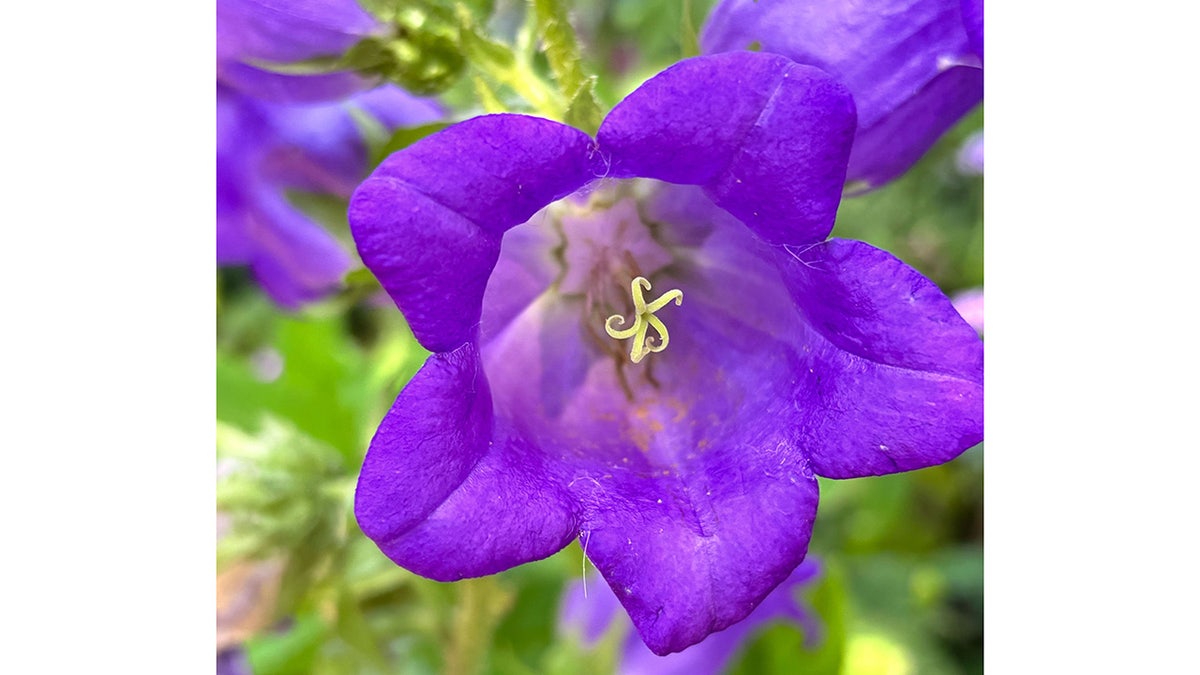
Canterbury bells at Monet’s Gardens at Giverny, France, June 27, 2024. (Kerry J, Byrne/Fox News Digital)
This stunning and distinctive flower, a showstopper in any garden, has long been central to decorative gardening.
STATE FLOWER QUIZ! CAN YOU MATCH THESE BEAUTIFUL FLOWERS WITH THEIR CORRECT STATES?
“The plant has been a part of European and English gardens since the 1500s and a part of American gardens since the 1700s,” reports the website of Colonial Williamsburg in Virginia.
“Most common blossoms are usually rich, deep purple, but can also be white, red or pink.”
Feverfew (with sun fly)

A bee seeks nectar in flower feverfew, a type of Chrysanthemum, found at Monet’s Gardens in Giverny, France. (Kerry J. Byrne/Fox News Digital)
Feverfew, a type of small daisy, has long played a role in folk medicine, first in Europe and later after it was imported to North America and other parts of the world.
“Two common reasons people take feverfew are to try to prevent migraine or lessen arthritis symptoms,” reports WebMD.
Painted tongue

Painted tongue, also known as velvet trumpet flower, at Monet’s Gardens at Giverny, France, June 27, 2024. (Kerry J. Byrne/Fox News Digital)
One of the most beautiful blooms at Giverny, or in any garden, is known by a variety of names: painted tongue, tube tongue and velvet trumpet flower among them.
ON THIS DAY IN HISTORY, JULY 9, 1828, AMERICAN PAINTER GILBERT STUART DIES AT AGE 72
Whatever this flower is called, it offers “a kaleidoscope of color and glossy, spectacular details,” reports NorthAmericanFarmer.com.
“This plant produces flowers that possess flamboyant pigment shadings and vivid veins.”
Safflower
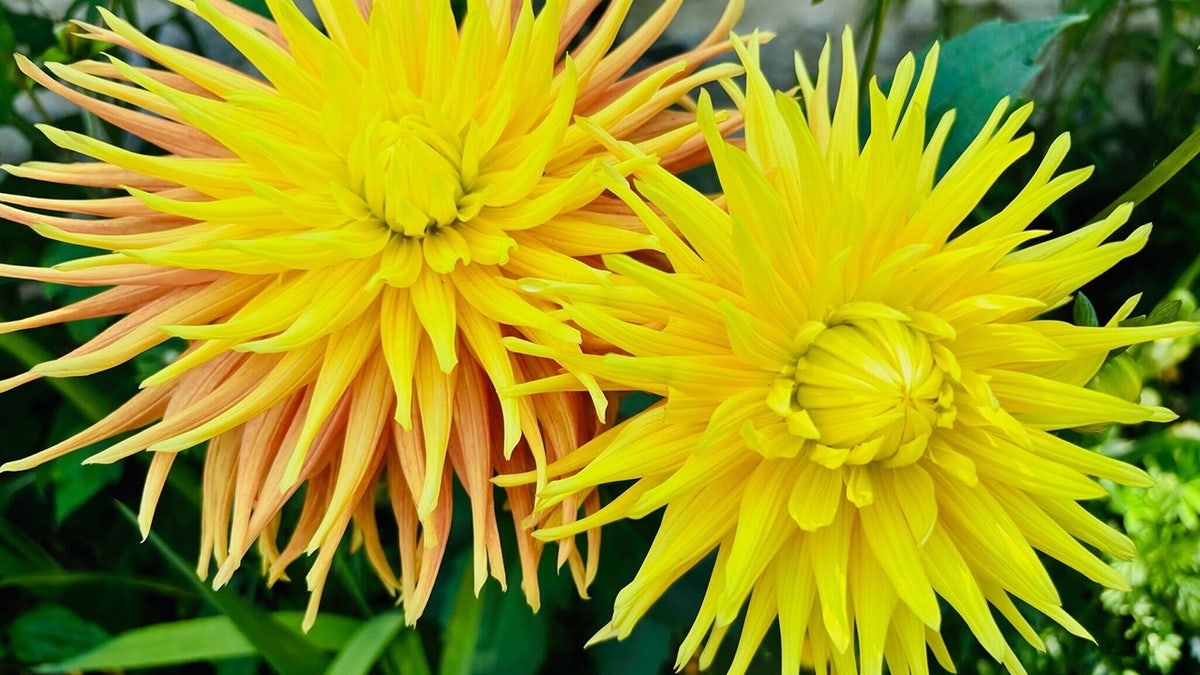
Safflower in bloom at Monet’s Gardens at Giverny, France, June 27, 2024. (Kerry J. Byrne/Fox News Digital)
These distinctive thistle-like flowers boast a significant history in human evolution far behind their eye-catching beauty.
“Safflower is one of the oldest known cultivated crops,” according to the website of Kew Royal Botanic Gardens of London.
“It has been a highly valuable resource for thousands of years; first as a clothing and food dye, then as a cheap alternative to saffron, and now a cooking oil and vital ingredient in skin and hair care products.”
Virginia spiderwort
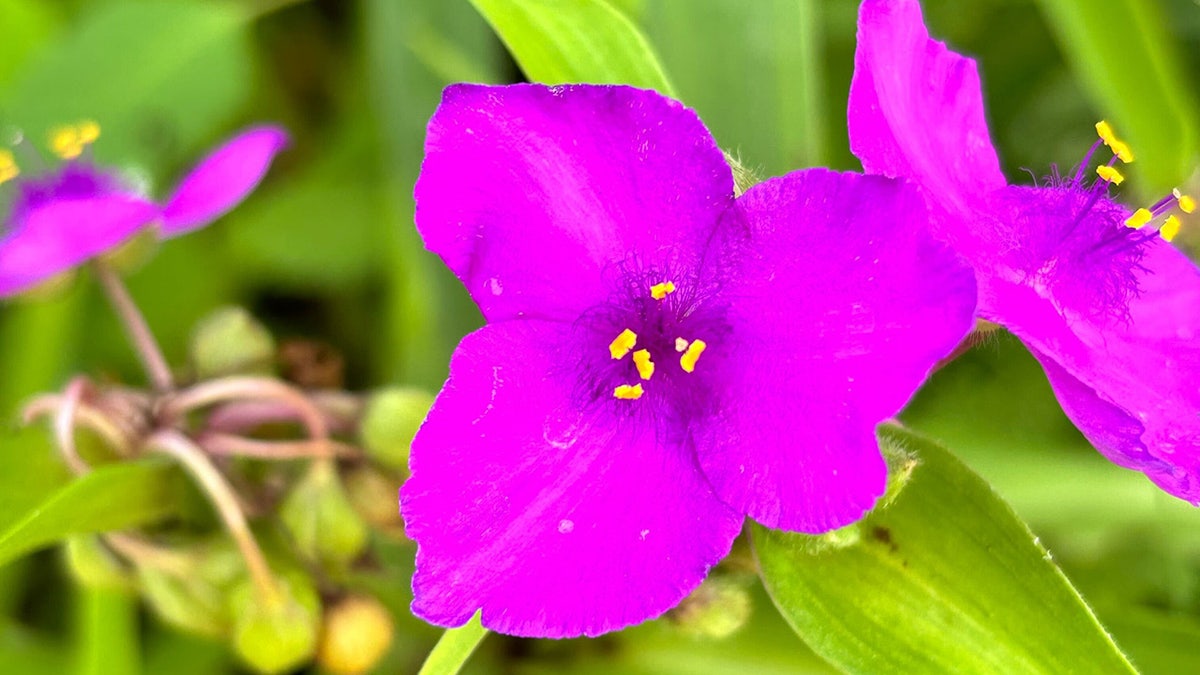
Virginia spiderwort in bloom on June 27, 2024, at Claude Monet’s gardens at Giverny, France. (Kerry J. Byrne/Fox News Digital)
An import from North America, this spectacularly vivid flower briefly blazes across Monet’s studio early summer and is a rare find even in its native habitat.
For more Lifestyle articles, visit foxnews.com/lifestyle
“The flowers open only in the morning,” reports wildflower.org. “The petals then wilt and turn to a jelly-like fluid. Spiderwort flowers close by midday and last only one day.”
Water lilies

Water lilies in the pond at Monet’s Gardens at Giverny, France, on June 27, 2024. (Kerry J. Byrne/Fox News Digital)
Often called by their botanical name “nymphaea” in Monet’s paintings, water lilies are easily the most instantly recognizable flower at Giverny.
CLICK HERE TO SIGN UP FOR OUR LIFESTYLE NEWSLETTER
They form the centerpiece of a series of 250 Monet paintings, many of them among the world’s most well-known pieces of art.
“Apart from painting and gardening, I am good for nothing. My greatest masterpiece is my garden.”
“Monet grew white water lilies in the water garden he had installed in his property at Giverny in 1893,” reports the website of Musee d’Orsay in Paris.

Claude Monet’s gardens at Giverny, France is a popular tourist attraction an hour’s drive outside Paris. Visitors recognize the garden’s signature water lilies and bridges, both frequently featured in the artist’s paintings. (Kerry J. Byrne/Fox News Digital)
“From the 1910s until he died in 1926, the garden and its pond in particular, became the artist’s sole source of inspiration.”
CLICK HERE TO GET THE FOX NEWS APP
Monet himself said, “I have come back to things that are impossible to do: water with weeds waving in the depths. Apart from painting and gardening, I am good for nothing. My greatest masterpiece is my garden.”


